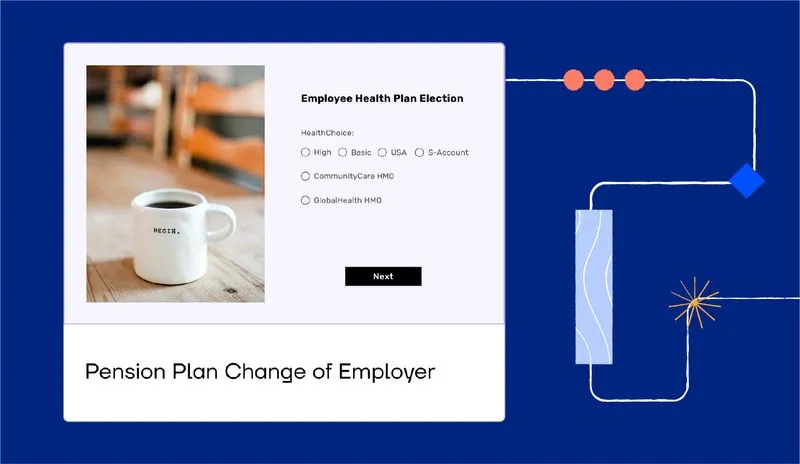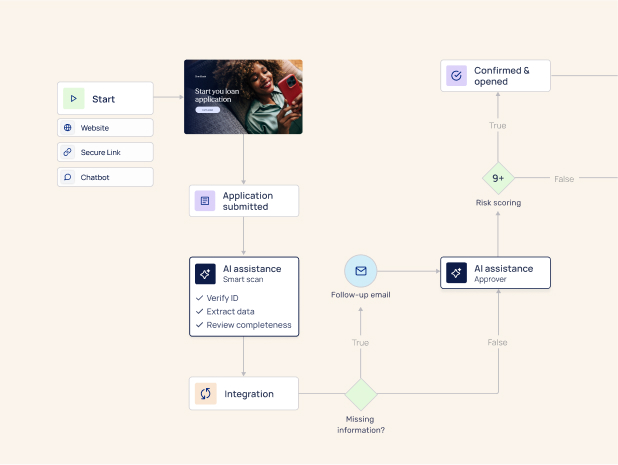The case for workflow automation in insurance is clear. By automating repetitive tasks, insurers can free up staff to focus on more value-added activities. In addition, automated processes can help improve accuracy and efficiency while reducing costs.
Data helps businesses understand their customers better and provides insights that can be used to improve the customer experience. For insurance companies, customer data is especially important in understanding customer risk profiles and developing tailored products and services.
The importance of customer data collection for workflow automation
Customer data is a critical input for many automated insurance processes.
Customer data is used to generate quotes, calculate premiums, and determine eligibility for coverage. In the event of a claim, customer data is used to verify coverage and assess damages.
As the insurance industry looks to adopt more automation in its workflows, customer data collection will play an increasingly important role. Seamless customer data collection can help insurance directors automate their workflow by providing the customer data needed to trigger automated processes.
Seamless customer data collection is essential for enabling insurers to reap the benefits of automation. By consolidating customer data into a single platform, insurers can ensure they have the information they need to automate their processes and improve customer service.
Challenges of customer data collection
However, collecting customer data can be a challenge. Insurance directors must ensure that they have the right systems and processes in place to collect customer data seamlessly. Only then can they reap the benefits of automation and data-driven decision-making.
To ensure seamless customer data collection, insurance directors should consider five areas:
- Focusing on customer experience: Insurance directors should consider which customer data collection methods will work best for their customers. There are a variety of data collection methods available, and insurers must focus on those that deliver the most accurate and up-to-date customer data while ensuring seamless customer experiences.
- Data quality: In order for customer data to be useful, it must be of high quality. This means that customer data must be accurate, complete, and up-to-date. To ensure data quality, insurance directors should consider investing in data cleansing and enrichment solutions.
- Data security: Data security is critical for any organization, but it is especially important for those that handle sensitive customer data.
- Customer data integration: Data silos can prevent customer data from being used effectively, so it is important to have a customer data integration strategy in place.
- Data governance: Data governance is the process of ensuring that customer data is accurate, complete, and up-to-date. This includes developing policies and procedures for data entry, storage, and retrieval. It also includes developing processes for managing customer data changes.
By considering these five areas, insurance directors can develop a customer data collection strategy that will help them reap the benefits of automation.
Common data collection methods
There are several ways to collect customer data, but each has its drawbacks.
- Paper forms: Paper forms are the traditional way of collecting customer data. This is still a common method used for in-person customer data collection. The major drawback of paper forms is that they require data entry, which leads to errors and can be time-consuming.
- Online forms: Online forms are a common way to collect customer data. Forms can be accessed on the website or customer portal. The advantage of online forms is that they are easier to fill out than paper forms, and they can be quickly submitted. They are typically used for customer self-service and can be completed on the customer’s own time. However, online forms can be difficult to design and often require customers to create an account. In addition, online forms for complex and lengthy processes can be daunting for customers to complete.
- Call centers: Call centers are another common method for customer data collection. Customers can provide their information to a customer service representative over the phone. The advantage of call centers is that they allow for customer interaction, which can help ensure accuracy. However, call centers can be costly to operate and customers may have to wait on hold for a long period of time. This is also a costly way to collect customer data.
- Interactive voice response (IVR): IVR systems are often used to collect customer data over the phone. The customer interacts with the IVR system through a touch-tone keypad or speech recognition. However, IVR systems can be difficult to use and often require customers to remember long menu options
- Chatbots: Chatbots have the advantage of being able to interact with customers in natural language. However, chatbots require significant training and development effort to get right. They are also often a source of frustration, as customers can have difficulty getting the chatbot to understand their needs.

Seamless customer data collection with interactive data intake UIs
Interactive data intake journeys are an emerging customer data collection method that outperforms other methods on customer experience, data quality, data governance and data integration.
Digital data collection journeys allow customers to provide their information through an interactive and guided process.
What makes digital data intake journeys different from other data collection methods?
Digital data intake journeys are customer-centric and work to reduce customer effort. The customer is taken on a digital journey that is personalized, interactive, and easy to use.
Digital data intake journeys are also flexible and can be easily adapted to changing customer needs.
This is in contrast to traditional customer data collection methods, which are often inflexible and difficult to change.
Digital data intake journeys offer a number of advantages over traditional customer data collection methods:
- Data is collected in a structured way: This allows for easy data entry and reduces the likelihood of errors. Data intake journeys can be used to collect customer data for any insurance process, from quote generation to claim submission.
- Customer effort is minimized: Customers are guided through the process and are only asked to provide relevant information to their needs.
- Customer satisfaction is increased: Customers have a positive experience and are more likely to complete the journey.
- Customer input is validated in real-time: This ensures that data is accurate and complete.
- Easily integrated into internal systems: Data is collected digitally, without need for manual data entry. This allows free flow of data within the organization for easy data analysis and decision-making.
- Balance self-service with support: Customers can choose to complete the journey on their own or receive support from customer service representatives in real time with a click of a button.
- Flexible and easy to change: Digital data intake journeys are managed from a central platform, allowing for bulk changes and updates.
- Personalized in real-time: Data intake journeys are flexible and can be easily adapted to changing customer needs.
Digital data intake journeys are the future of customer data collection.
With interactive data intake, insurance directors can finally have a customer data collection method that is accurate, efficient, and cost-effective. This will allow them to automate their workflow and reap the benefits of increased efficiency and accuracy.





